 Credit: AMD
Credit: AMD
Welcome back to the high end, AMD. After years of being mired in second place, far behind the top GeForce offerings, the $580 Radeon RX 6800 and $650 Radeon RX 6800 XT deliver blistering performance on a par with—or better than—than Nvidia’s flagship gaming graphics cards in everything but ray tracing, as we covered in our AMD Radeon RX 6800-series review.
You need a pixel-packed monitor to push these graphics cards to their limits, however (though AMD’s RDNA 2 architecture scales down to 1080p much better than rival Nvidia GPUs). For most people, that means a 4K or 1440p display. But there's another option: 3440x1440 ultrawide monitors split the performance difference between a 4k and 1440p display in terms of raw pixel count, and provide a level of immersion you just can’t achieve on a standard rectangular display. Better yet, AMD’s latest graphics cards come stuffed with a massive 16GB of onboard memory that can handle any high-resolution textures your games can throw at it, even under strenuous ultrawide conditions.
So as we’ve done recently with the GeForce RTX 3070, 3080, and 3090, we decided to test many of the games in our standard benchmarking suite with a 3440x1440 monitor so you can see how AMD’s Radeon RX 6800 and 6800 XT perform. Let’s dig in.
AMD Radeon RX 6800 and 6800 XT 3440x1440 ultrawide benchmarks
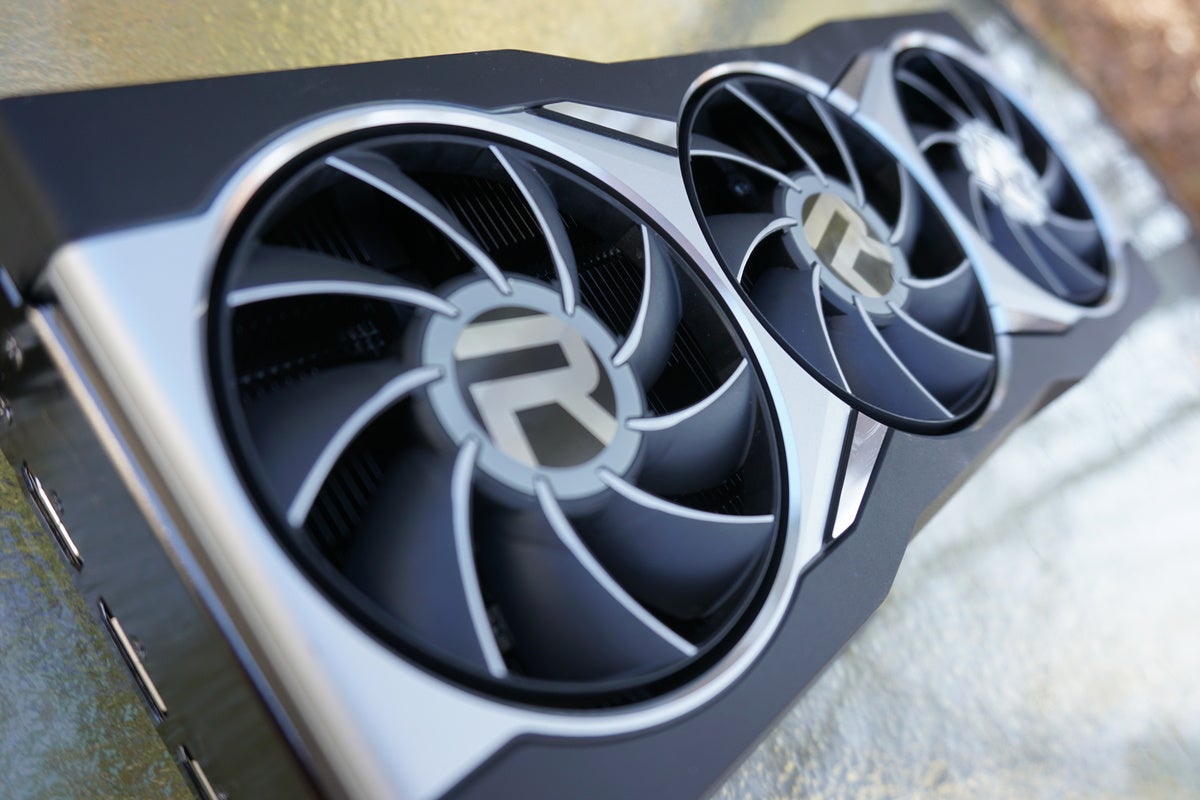 Brad Chacos/IDG
Brad Chacos/IDGWe conducted our tests on the same $550, 144Hz Nixeus EDG34S monitor as before. It’s an outstanding value for the price, albeit a bit sparse with extra quality-of-life features, and it supports AMD’s FreeSync Premium adaptive sync technology. You’ll need to use the monitor’s on-screen display to activate adaptive sync. We tested with FreeSync off, per our norm.
Here’s a list of what’s inside our GPU test system. It was built to minimize potential bottlenecks in other components, putting the full brunt of the workload on the graphics card itself:
- Intel Core i7-8700K processor ($300 on Amazon) overclocked to 5GHz all-core
- EVGA CLC 240 closed-loop liquid cooler ($105 on Amazon)
- Asus Maximus X Hero motherboard
- 64GB HyperX Predator RGB DDR4/2933 ($355 on Amazon)
- EVGA 1200W SuperNova P2 power supply ($352 on Amazon)
- Corsair Crystal 570X RGB case, with front and top panels removed and an extra rear fan installed for improved airflow
- 2x 500GB Samsung 860 EVO SSDs ($70 each on Amazon)
Each game is tested using its in-game benchmark at the highest possible graphics presets unless otherwise noted. We disable VSync, frame rate caps, real-time ray tracing or DLSS effects, and FreeSync/G-Sync, along with any other vendor-specific technologies like FidelityFX or Hairworks. We’ve also enabled temporal anti-aliasing (TAA) when it’s available to push these cards to their limits.
Hit up our full AMD Radeon RX 6800 and 6800 XT review for more information on our methodology and testing system. We’ll just present the raw graphs and game info before offering some wrap-up thoughts at the end.
Horizon Zero Dawn
Yep, Sony exclusives are hitting the PC now. Horizon Zero Dawn runs on Guerrilla Games’ Decima engine, the same engine that powers Death Stranding. Ambient Occlusion can still offer iffy results if set to Ultra, so we test with that setting at Medium. Every other visual option is maxed out.
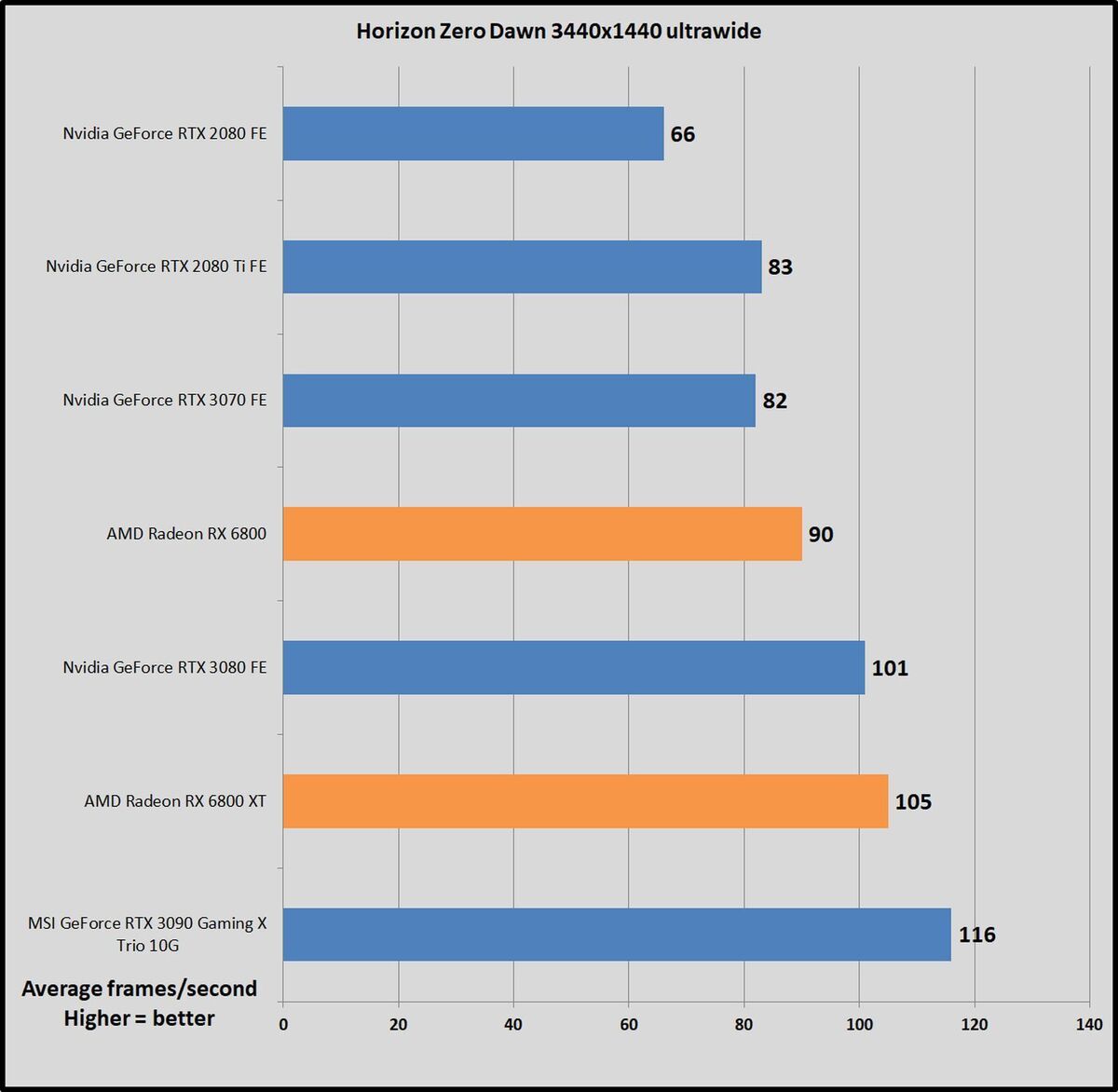 Brad Chacos/IDG
Brad Chacos/IDGGears Tactics
Gears Tactics puts it own brutal, fast-paced spin on the XCOM-like genre. This Unreal Engine 4-powered game was built from the ground up for DirectX 12, and we love being able to work a tactics-style game into our benchmarking suite. Better yet, the game comes with a plethora of graphics options for PC snobs. More games should devote such loving care to explaining what flipping all these visual knobs mean. You can’t use the presets to benchmark Gears Tactics, as it intelligently scales to work best on your installed hardware, meaning that “Ultra” on one graphics card can load different settings than “Ultra” on a weaker card. We manually set all options to their highest possible settings.
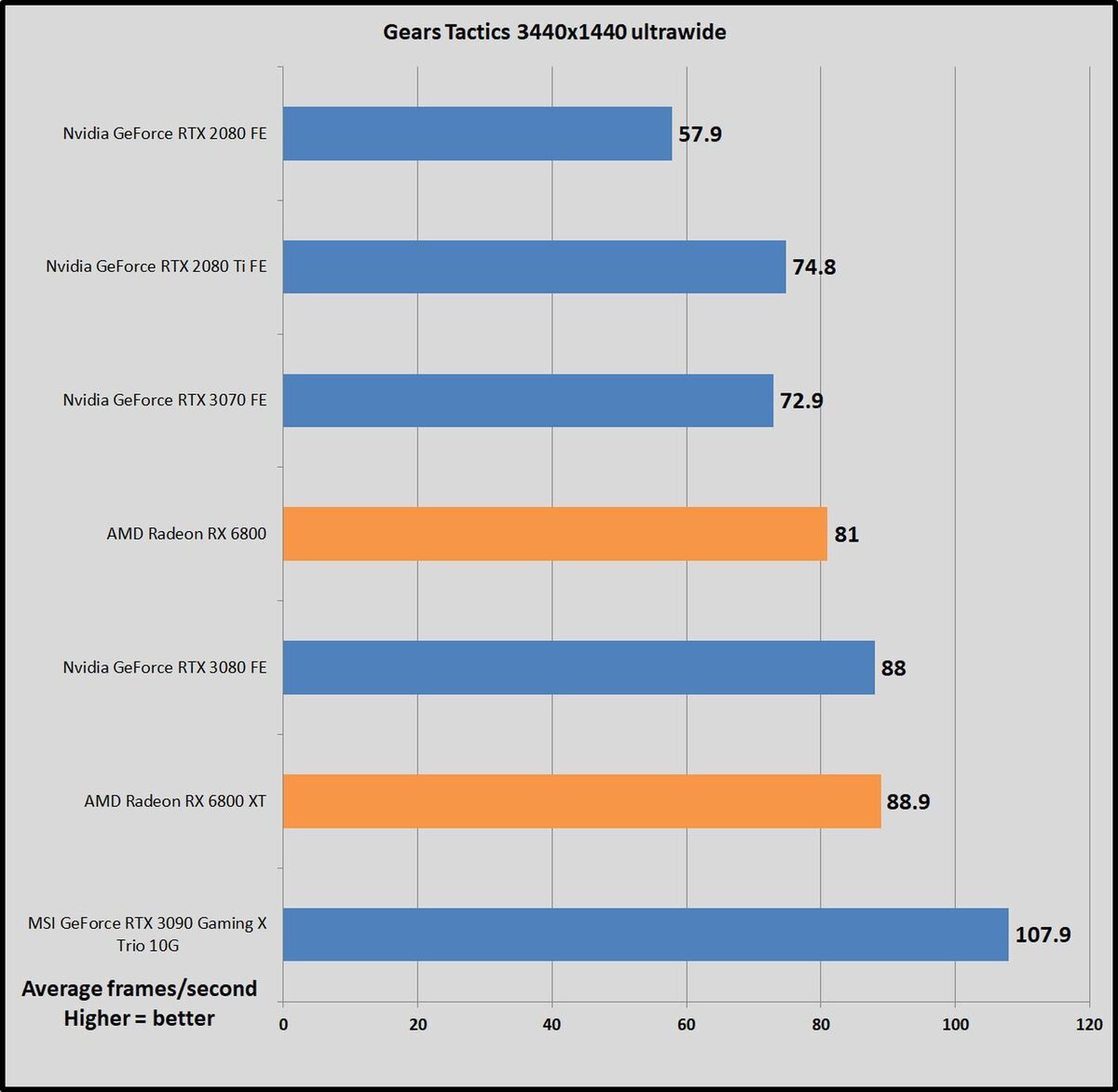 Brad Chacos/IDG
Brad Chacos/IDGMetro Exodus
One of the best games of 2019, Metro Exodus is one of the best-looking games around, too. The latest version of the 4A Engine provides incredibly luscious, ultra-detailed visuals, with one of the most stunning real-time ray tracing implementations released yet. We test in DirectX 12 mode with ray tracing, Hairworks, and DLSS disabled for our basic benchmarks.
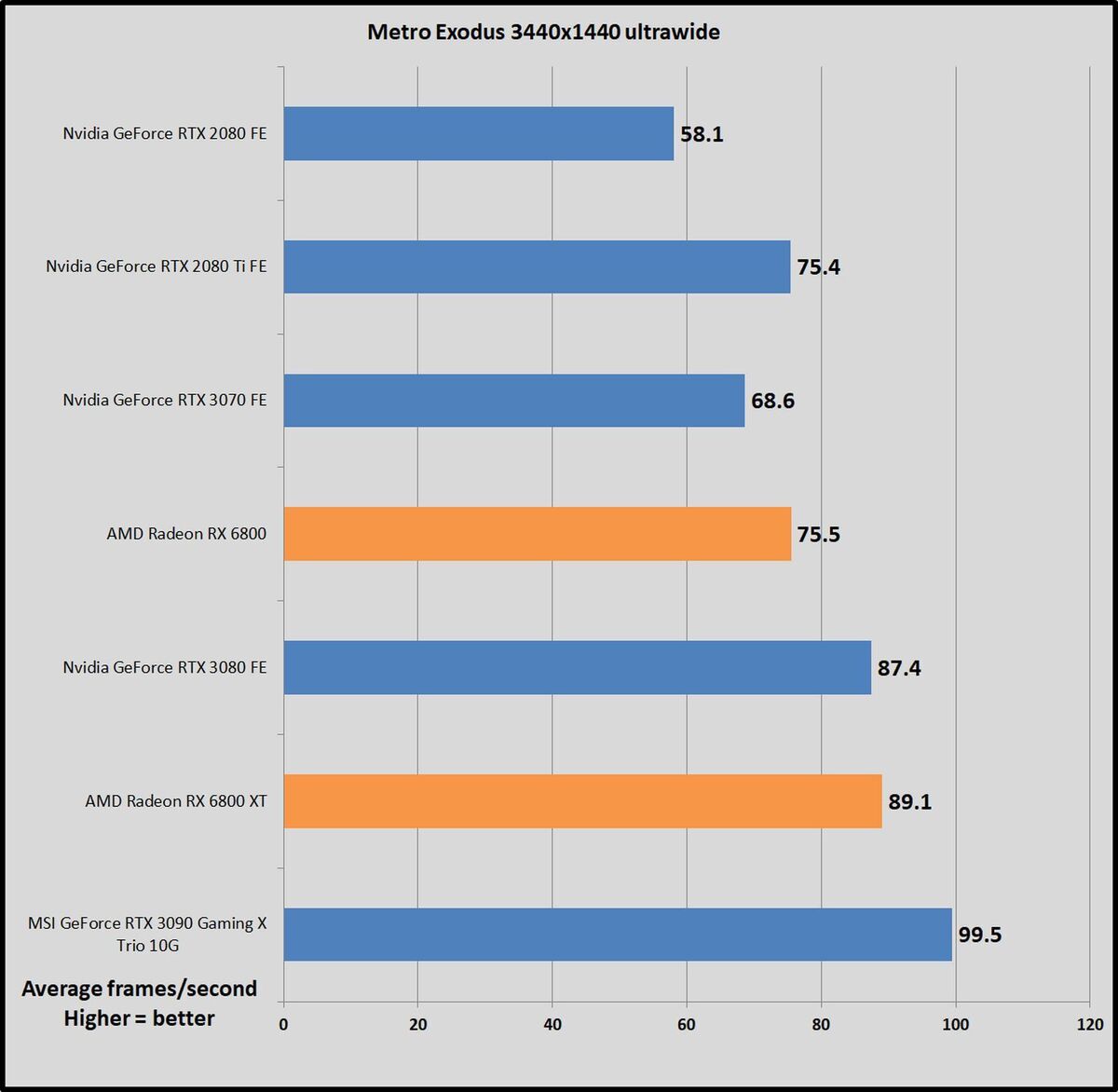 Brad Chacos/IDG
Brad Chacos/IDGStrange Brigade
Strange Brigade is a cooperative third-person shooter where a team of adventurers blasts through hordes of mythological enemies. It’s a technological showcase, built around the next-gen Vulkan and DirectX 12 technologies and infused with features like HDR support and the ability to toggle asynchronous compute on and off. It uses Rebellion’s custom Azure engine. We test using the Vulkan renderer, which is faster than DX12.
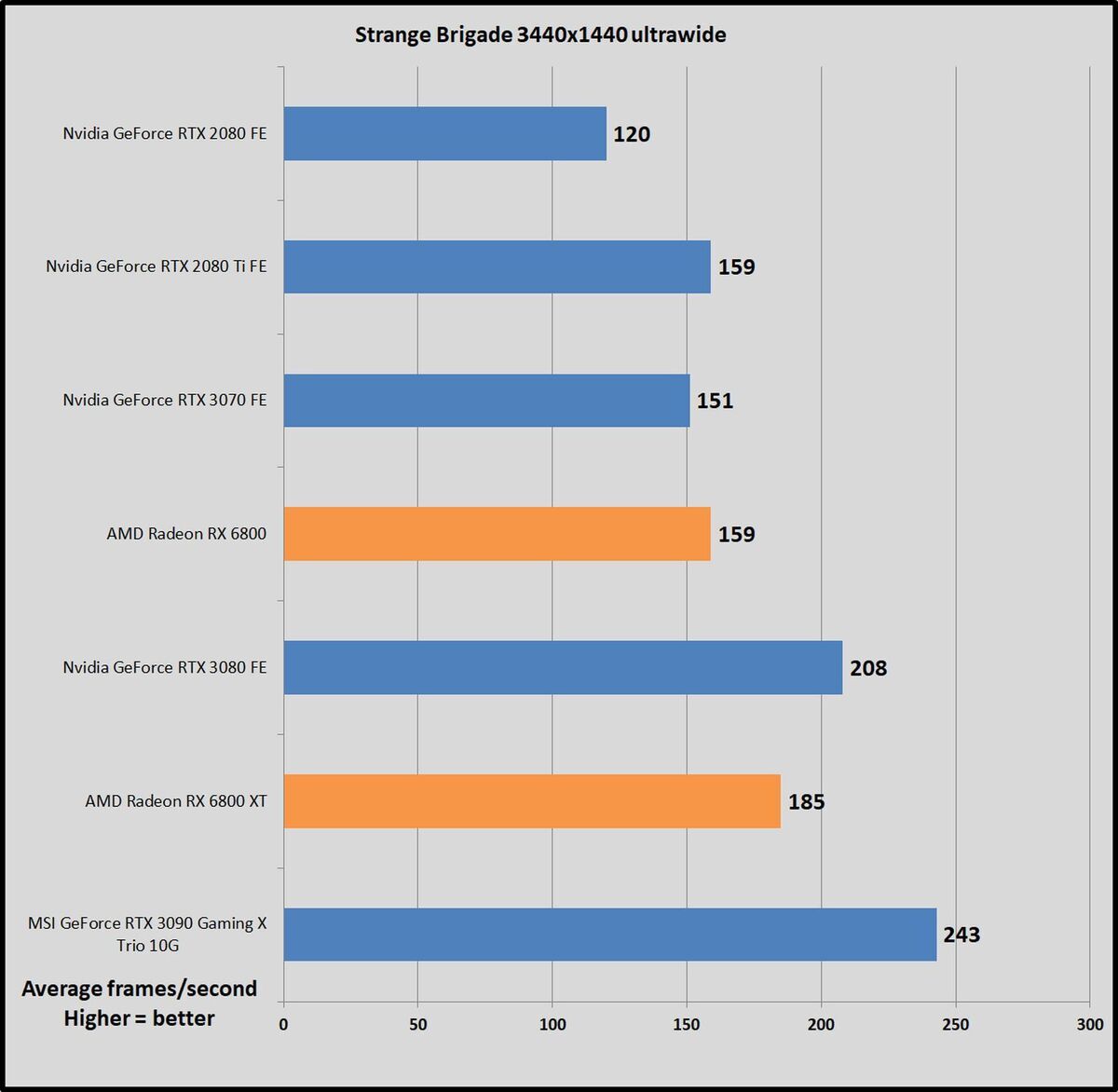 Brad Chacos/IDG
Brad Chacos/IDGTotal War: Troy
The latest game in the popular Total War saga, Troy was given away free for its first 24 hours on the Epic Games Store, moving over 7.5 million copies before it went on proper sale. Total War: Troy is built using a modified version of the Total War: Warhammer 2 engine, and this DX11 title looks stunning for a turn-based strategy game. This game strongly favors Nvidia’s architecture, while Borderlands 3 performs much better on AMD’s RDNA 2.
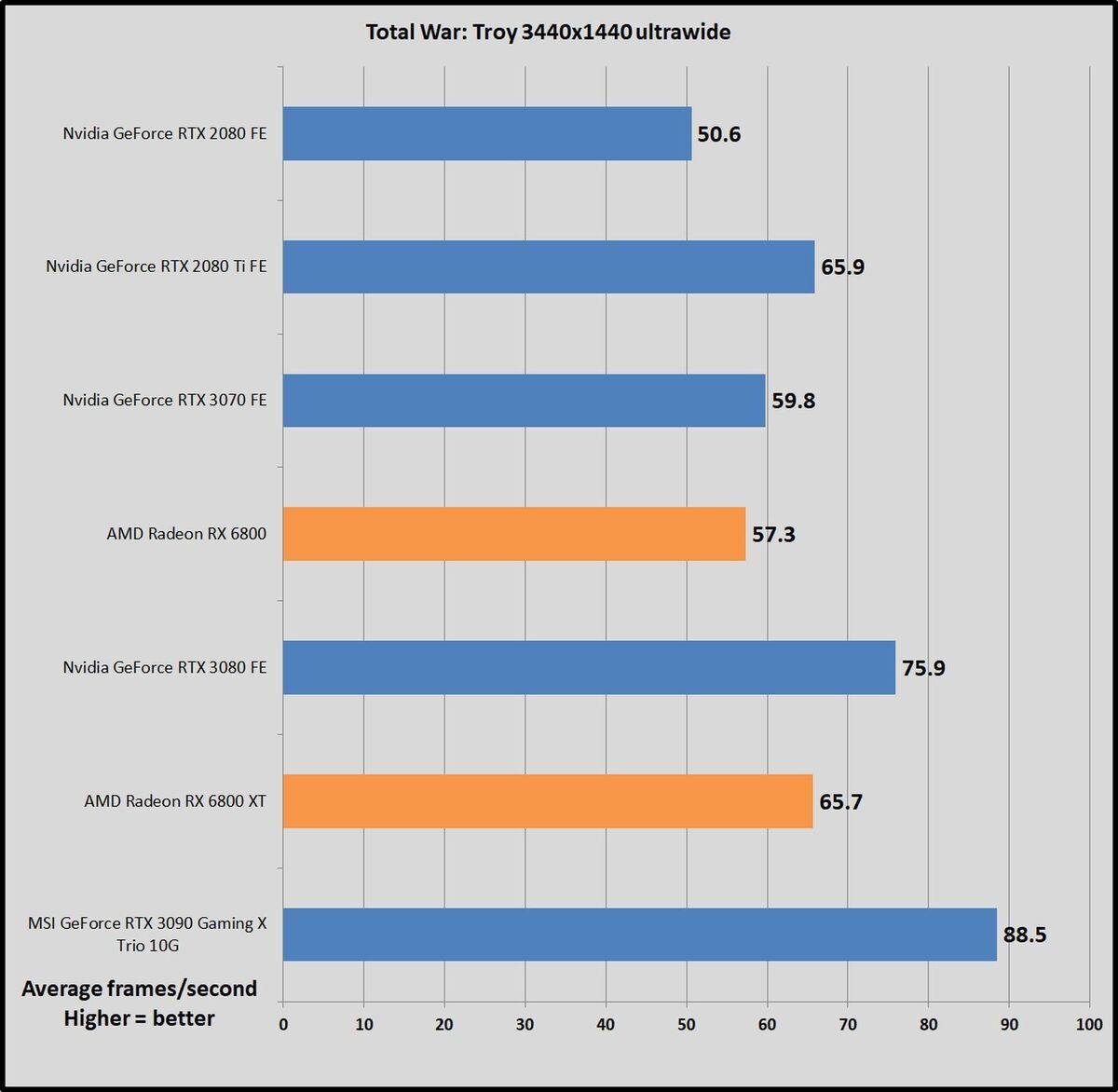 Brad Chacos/IDG
Brad Chacos/IDGShadow of the Tomb Raider
Shadow of the Tomb Raider concludes the reboot trilogy, and it’s utterly gorgeous. Square Enix optimized this game for DX12, and recommends DX11 only if you’re using older hardware or Windows 7, so we test with DX12. Shadow of the Tomb Raider uses an enhanced version of the Foundation engine that also powered Rise of the Tomb Raider and includes optional real-time ray tracing and DLSS features.
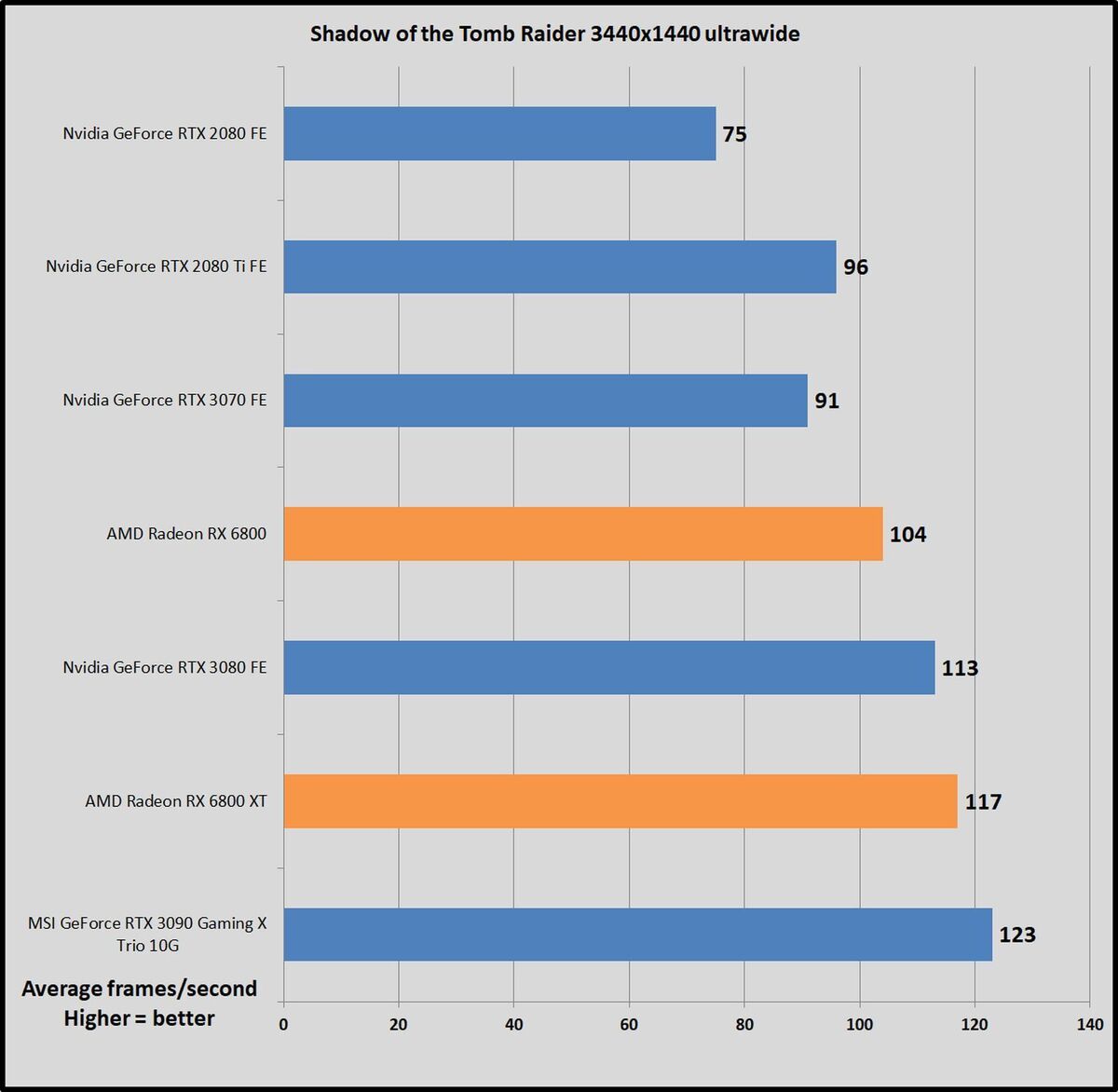 Brad Chacos/IDG
Brad Chacos/IDGGTA V
This DX11 game that isn’t really a visual barn-burner like the (somewhat wonky) Red Dead Redemption 2, but still tops the Steam charts day in and day out. We test Grand Theft Auto V with all options turned to Very High, all Advanced Graphics options except extended shadows enabled, and FXAA. GTA V runs on the RAGE engine and has received substantial updates since its initial launch.
 Brad Chacos/IDG
Brad Chacos/IDGRainbow Six Siege
Like GTA V, Ubisoft’s Rainbow Six Siege still dominates the Steam charts years after its launch, and it’ll be getting a visual upgrade for the next-gen consoles. The developers have poured a ton of work into the game’s AnvilNext engine over the years, eventually rolling out a Vulkan version of the game that we use to test. By default, the game lowers the render scaling to increase frame rates, but we set it to 100 percent to benchmark native rendering performance on graphics cards. Even still, frame rates soar.
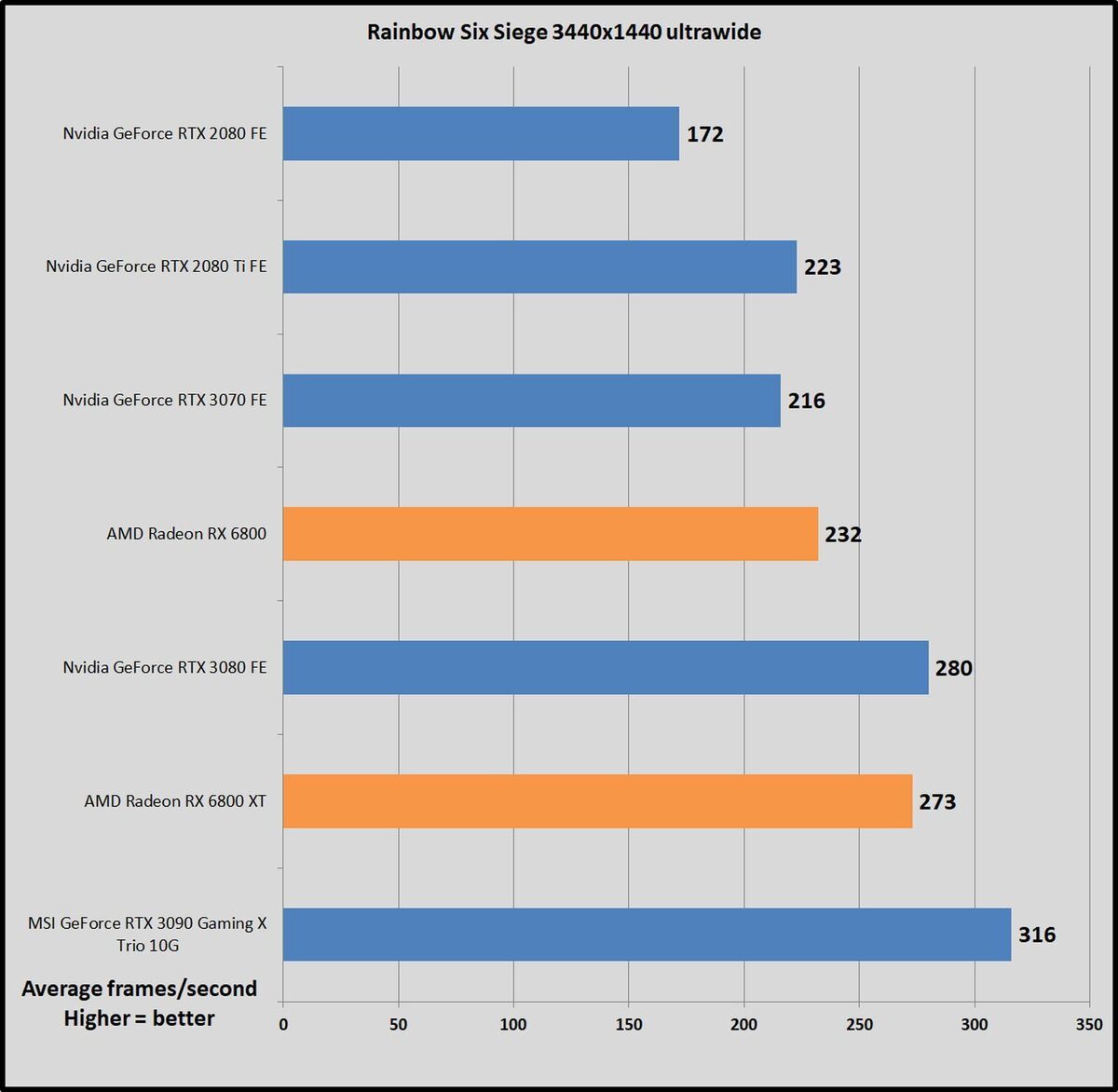 Brad Chacos/IDG
Brad Chacos/IDGFinal thoughts and analysis
The 3440x1440 benchmarks largely align with what we witnessed in our formal review. The $650 Radeon RX 6800 XT and $700 GeForce RTX 3080 Founders Edition each win some and lose some by larger margins, but largely trade blows on an ultrawide monitor. The $580 Radeon RX 6800 beats the $500 GeForce RTX 3070 across the board and by a decent rate, but you’d expect that from a graphics card that costs $80 more. Assuming you can find any of these for sale, that is.
Each brand has a key advantage in its favor. Memory capacity matters at higher resolutions like this, especially if you flip on ray tracing or crank up textures and other visual settings to Ultra. AMD’s Radeon RX 6800-series graphics cards come equipped with huge 16GB GDDR6 memory buffers, which should be more than enough for years to come. Nvidia outfitted the GeForce RTX 3070 with 8GB and the GeForce RTX 3080 with 10GB, by comparison. Those capacities should be fine in the vast majority of today’s games, but we’re already seeing some titles exceed that. The RTX 3080's 10GB is of the much faster GDDR6X variety, however, so its memory bandwidth exceeds what the rest of these cards offer.
Nvidia, on the flip side, offers significantly better ray tracing performance if that matters to you, and AMD has no answer yet for DLSS. Nvidia’s Deep Learning Super Sampling uses AI to help claw back the frames lost to ray tracing’s substantial impact, and DLSS 2.0 works like black magic. It’s even being added to some games that don’t support ray tracing to increase your overall performance. Nvidia’s software ecosystem is also favored by streamers and content creators, if you do more than just gaming.
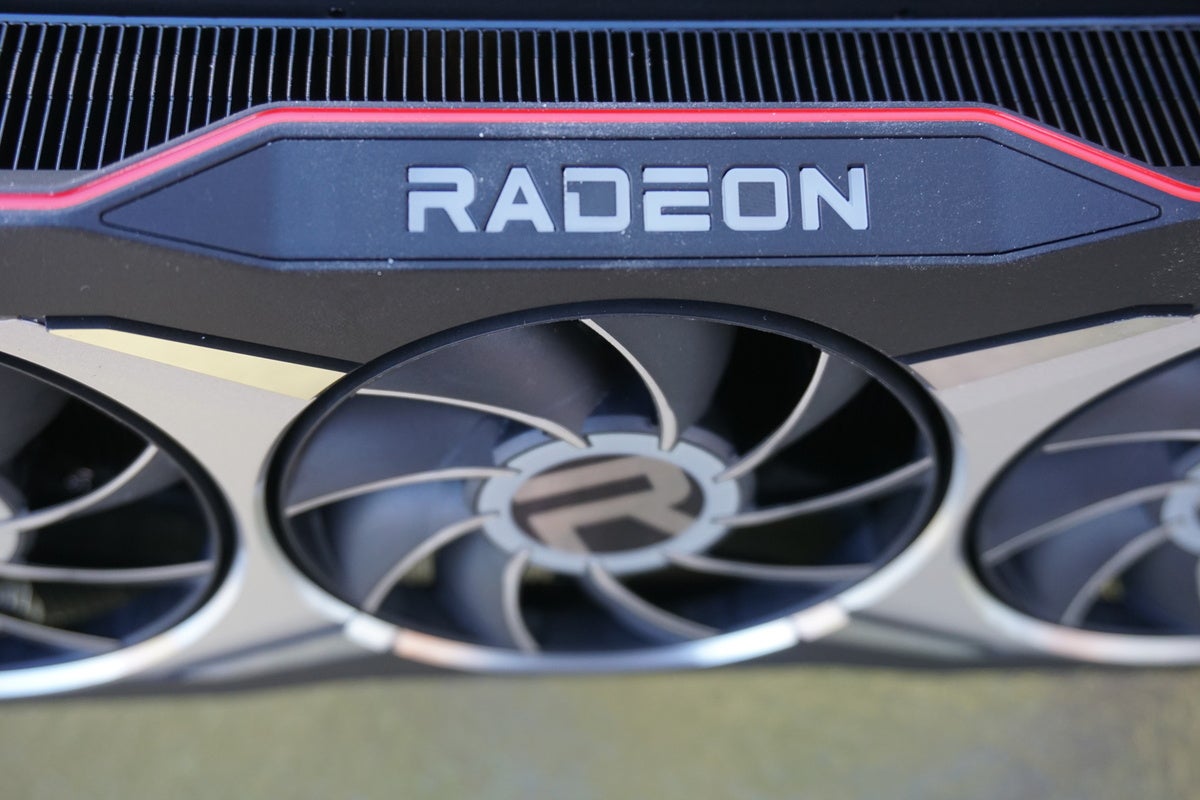 Brad Chacos/IDG
Brad Chacos/IDGWhich features matter more to you should guide your choice in which graphics cards to buy. For much more comprehensive analysis, be sure to read our full Radeon RX 6800 and 6800 XT review, plus our RDNA 2 architecture deep dive if you want to see how AMD pulled this off. For the quick-hit version of how AMD’s return to high-end gaming stacks up, check out our guide to 5 key things you need to know about the Radeon RX 6800-series.

















